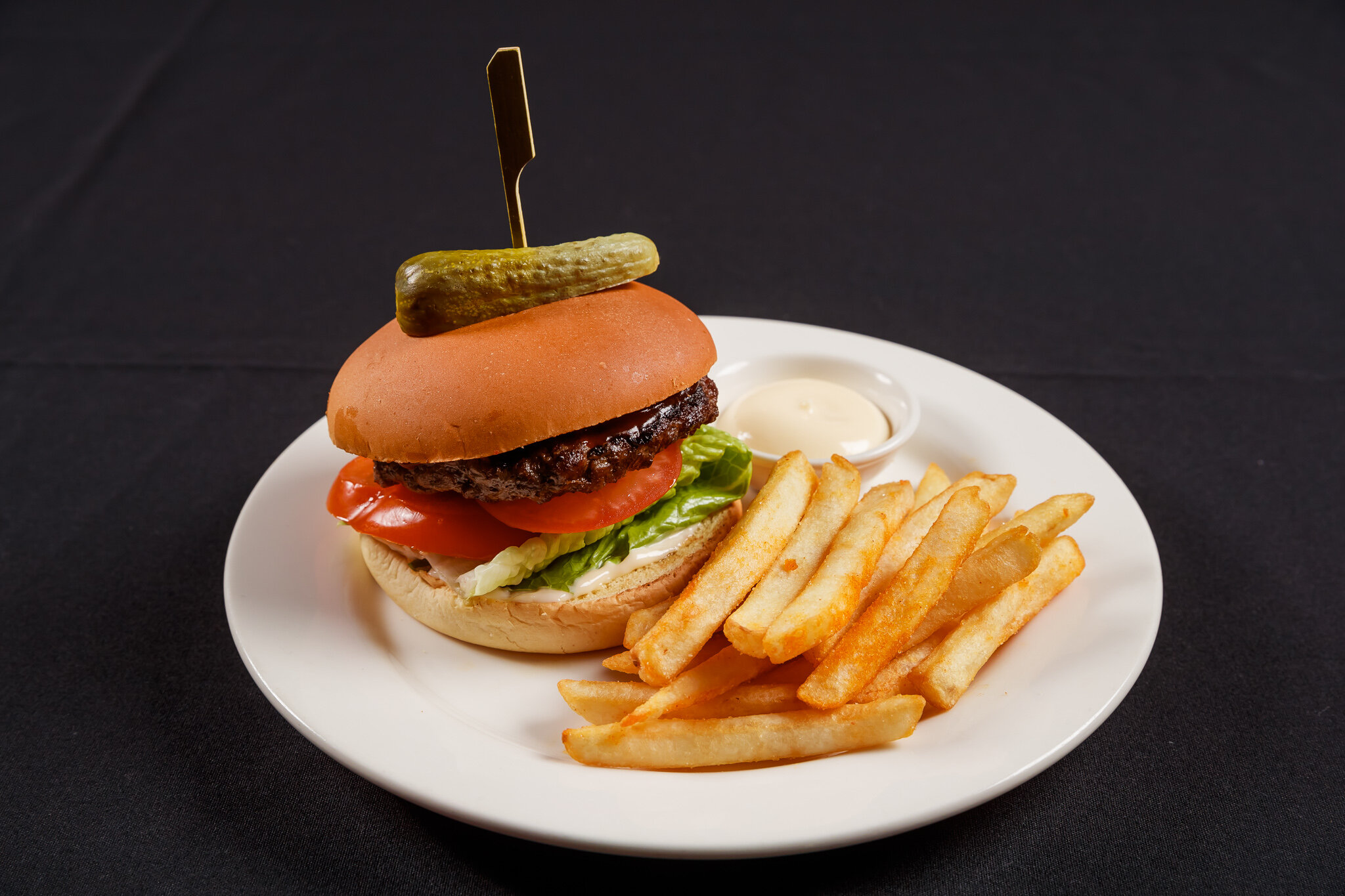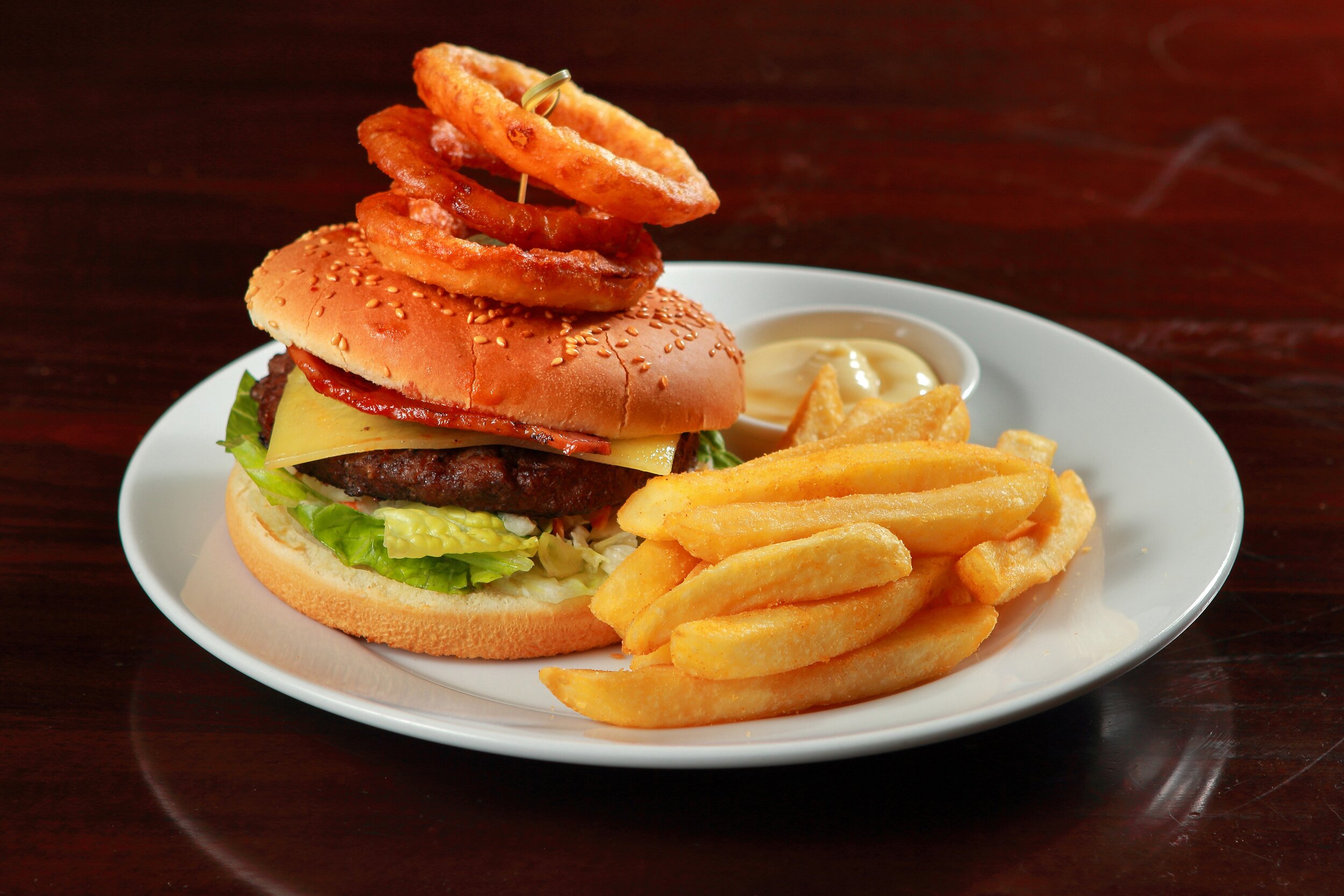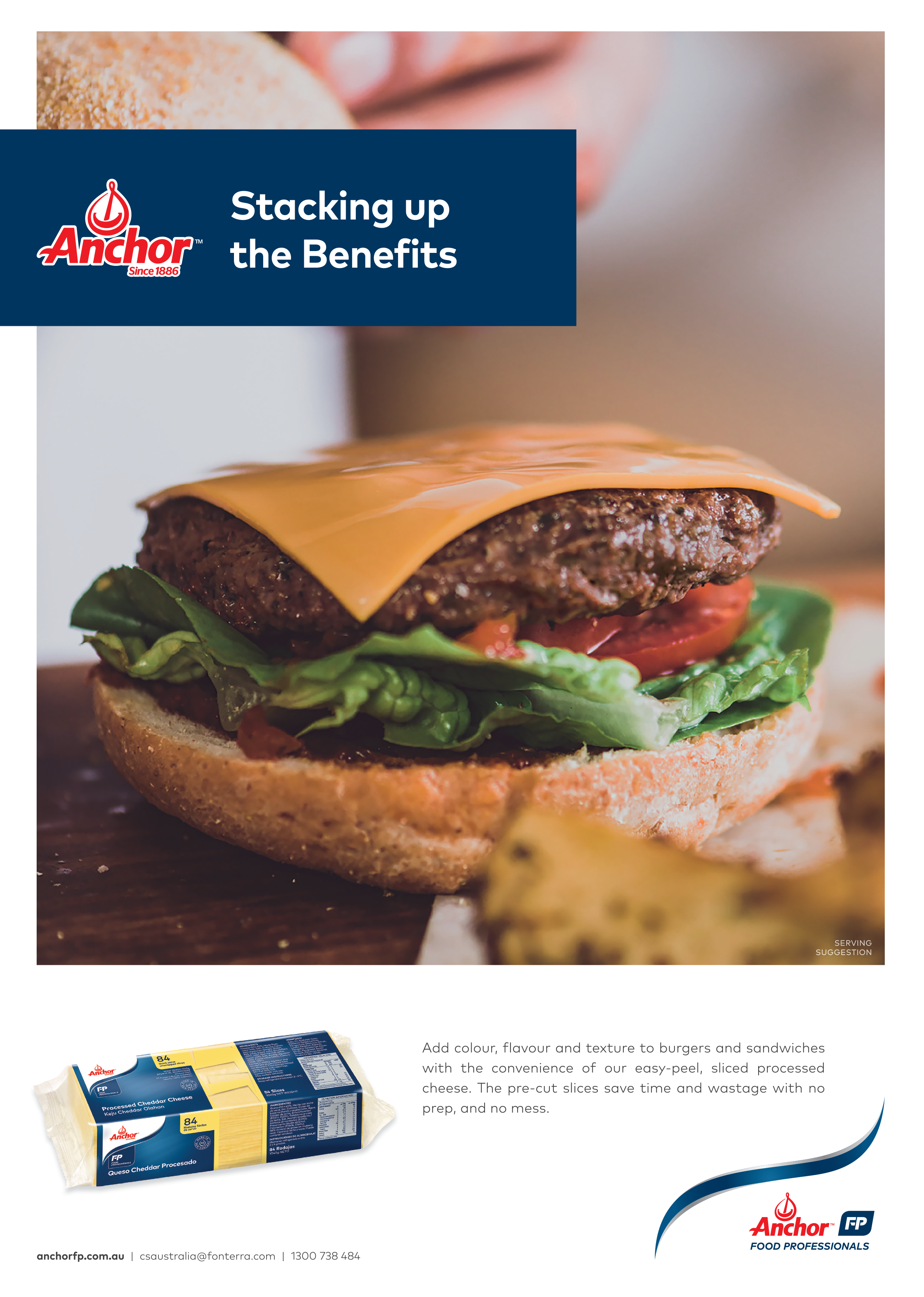How to make your burgers a menu ‘must-have’
Burgers have long been a takeaway menu mainstay, but more recently the dining public has embraced them as dine-in and home delivery favourites as well, and today chefs across the spectrum of foodservice are using burgers to showcase their creativity – adding all manner of inventive ingredients, served within a range of buns far removed from the simple presentation of old.
This ‘upmarket burger’ approach was in part pioneered by the pub market, says Gary Johnson, National Executive Chef for ALH Group which operates more than 340 hotels nationally.
“Pubs have had attractively presented and generously filled burgers on the menu for years – what we’re seeing lately is simply the realisation by the rest of the market of what we in the pubs knew long ago, that the public are prepared to pay for a great burger made with quality ingredients”
“You’ve got to have a great bun, and then the pattie – 150 to 200g with the right blend of meat, the right amount of fat – topside, maybe a little skirt, the right calibre of grind. All these are important components that go into making the burger. There are some boutique butchers who can do fantastic burger patties – getting that right is really the key to your burger build. I always say that starting with quality meat and cooking it simply with olive oil, salt and pepper is the way to go.”
Matcha Burger
Most of ALH’s pubs offer customers a choice of several different buns, including Pretzels and Matcha buns, but Gary says the most popular is the milk bun with its beautifully soft mouthfeel.
“Once you’ve got the bun and the pattie right, the next step is ensuring a good mix of ingredients with complementary flavours and textures,” he adds. “Start with the staples like lettuce, tomato, cheese and dill pickle, but then you can begin to customise. Sauces like chipotle and barbecue are extremely popular, as are fillings like kimchi. We find a lot of our customers like to build their own burgers according to personal preference so we try to give them that option.”
Plant-based burgers carving out a niche on the menu
ALH’s pubs also offer several signature burgers which Gary says “give our chefs a chance to play around and be a bit creative” – the most popular of which is the Southern Fried Chicken Burger. “We use a little bit of slaw, some cos, a buttermilk-soaked chicken thigh fillet, ranch sauce and then whatever else the chef wants to include.”
While chicken, fish and pulled pork burgers have been offered alongside the traditional beef burger for many years, the last year has seen widespread embrace of plant-based burger fillings designed to mimic the flavour and appearance of red meat.
“These burgers are designed to appeal to the flexitarian as well as the vegetarian and vegan market,” Gary points out, “and the demand for plant-based is now extending not just to the filling but also the bun – we’re seeing a lot more potato or vegetable flour buns becoming available, which are milk-free making them suitable for vegans. The plant-based burgers have recently carved out a niche for themselves on the menu now.”
“It’s all about layering”
In today’s social media driven society, presentation is more important than ever, points out consultant chef Peter Wright, and this is important to consider in making your burgers a menu ‘must-have’: “It’s photo before fork today, which means it’s got to look great when it comes out of the kitchen or you open the home delivery container.”
This means constructing the burger in such a way that the presentation will hold up. “It’s all about layering – you put your relish or mayo-based sauce on the bottom of the bun, that seals the bread. Then your lettuce and tomato, meat and cheese and caramelised onions, bacon and whatever else on top. Then another layer of mayo or chutney-based sauce, then the top bun. This way you have your vegies, proteins and meats all separated out.”
Like Gary, Peter says choosing quality ingredients is key to building a great burger. “A quality bun is critical to hold it all together – brioche is trending right now, which is made with butter so it enriches the taste. If you eat a meat pattie on its own it can taste pretty bland, but a good brioche bun will enhance the experience. Choosing one with particles like sesame or pumpkin seeds or some roasted pepitas on top will add a bit of crunch to what can otherwise be a quite dense mouthfeel.
“It’s the same with your other ingredients – choosing a variety of textures is important. The choice of cheese depends on your customer demographic – creamy, melty cheese is more popular with younger customers, whereas the older consumer may prefer a stronger flavour.”
Foodservice operators are now experimenting with Swiss cheeses like Emmental, which hold up quite well and don’t melt so much, giving you a distinctive flavour. Other people are going for that gooey, melty, orange cheese which is part of the American burger experience.”
The need to strike a balance
Peter says that as the person designing the burger, you should write down all the ingredients, review them in your own mind and ask: would I want to eat all those in one mouthful? “Because that’s what your customers will be doing – taking them all in with one bite, so you need to try to strike a balance. Once you’ve done that, cook the burger and eat the whole thing, and if you get halfway through and think something’s not quite right, go back to the drawing board.
“As chefs we can often come up with innovative ideas, but realistically it can take 10 or 12 attempts to create a really good burger. And with so many patties to choose from, make sure you get that right too – do you want two centimetres, one centimetre, half a centimetre thick? Should the meat be a fine or a coarse grind? My approach is it’s all about the crunch and the mouthfeel, and you should always get some of the juice on the outside of your hand. If you can lick your fingers at the end, that’s part of the charm of eating a burger.
“And there’s always that same debate about whether to put pineapple in burgers – some people love it, others hate it. My recommendation is if you’re going to use pineapple, lightly dust it with some cinnamon first, then grill it – that will give you a light cinnamon flavour on the outside, instead of that excessive sweetness you can get with canned pineapple, and it’s a great ingredient in a chicken burger.”
Find your point of difference in your ingredients
Burgers are big business in the club market, such as The Ary Toukley on the NSW Central Coast where Executive Chef Alex Patterson and his team have three on the menu.
“We have a classic beef burger, a fried chicken burger and a third which we alternate every few days to give us a bit of flexibility and add some variety for our customers,” Alex says.
“We sold 60 burgers last night, which is pretty crazy – we do a $15 burger night every Thursday and it used to be 20 or 25 but 60 is just massive.”
Alex Patterson Executive Chef
The Ary Toukley
The classic is by far the biggest seller – which as the name suggests is the classic beef, cheese and salad burger. “We use milk buns, which hold well while being really light and fluffy. I think the secret behind our classic burger is that we make our own pickles – we pickle our own jalapeno peppers – and we make our own burger sauce. We finally nailed it – we use a pickle relish, tomato sauce and mayo combo with some paprika mixed in. We blitz it up until it all combines really nicely and comes out smooth. It’s definitely the sauce that makes the difference, that and a really good burger cheese with a high melt.”
Then there’s the fried chicken burger, for which Alex makes a marinade from maple syrup and buttermilk. “We chill it and soak our chicken in it for a day, then we make a flour coating with about seven different ingredients and lightly coat the chicken in it straight out of the buttermilk. You crunch it around in your hand and it imparts a range of textures – then we fry the chicken up and season it with salt once it’s out of the fryer.” Alex says that while the chicken has been tapped out to tenderize it, the buttermilk and maple syrup marinade makes it even more tender – “once it’s been fried up, it pretty well melts in your mouth.”
Will “flavour overload” be the next big thing in burgers?
Consultant chef Adam Moore says that “flavour overload” is what many customers are looking for right now when it comes to burgers. “Chefs are using multiple patties – like pork and beef combined – to take customers on a full flavour adventures, or not just one cheese but two or three to get a contrast of flavours. I think it’s important to be adventurous with ingredients and don’t be afraid of hamming it up! You can soup your burgers up with spicy relishes and sauces – it’s all about the add-ons.”
He adds that new buns are beginning to trend in the market, such as the American style potato bun. “I made an American style burger on Channel 10 as part of the American election coverage in November, using fried onion rings which are right on trend and multiple cheeses. And there’s a guy trending on Instagram right now who’s big on burgers – Isaac Martin, aka Sir Eats-A-Lot, (a member of the Chew Crew, a coalition of Australia’s top ‘competitive eaters’). He’s showcasing these amazing burgers that I’d call ‘frankenburgers’ because they’ve been put together from all kinds of ingredients and offer multiple layers of flavour. He’s replacing your regular cheese with blue cheese and spicy hot sauce and is busily promoting these, so maybe flavour overload is going to be the next big thing in burgers.”










